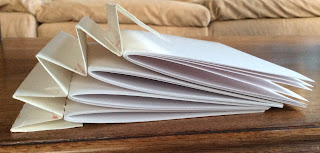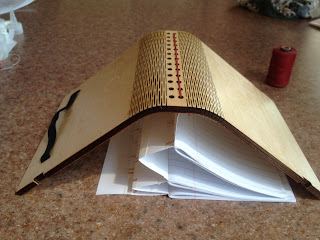 I am in the process of learning how to finish laser-cut wood and leather. I recently finished making a wooden purse for my mother, using an open source design by Scott Austin (CC BY SA).
I am in the process of learning how to finish laser-cut wood and leather. I recently finished making a wooden purse for my mother, using an open source design by Scott Austin (CC BY SA). If you are interested in open source designs, you may want to check out Obrary.com, a fantastic repository for Creative Commons licensed designs that may be produced with a laser cutter or CNC router.

The purse design calls for 1/4" hardwood; as a novice, I started with Baltic birch. While I was excited to get the pieces cut out (especially the living hinge) I learned that I should have modified the design to ensure that the size of the tabs matched up with the exact thickness of my wood. I also discovered that it's important to pay attention to the direction of the wood grain when moving shapes around in Adobe Illustrator. Since I didn't consider these things prior to cutting out the pieces, the wood grain lacks consistency and the tab connections look sloppier than I would have liked.
After gluing the purse together and sanding the wood, I used FW Pearlescent Liquid Acrylic Ink, in Birdwing Copper, to add color to the plywood. Next time, I'll probably opt for a more traditional stain.

After washing the char off of the leather with Murphy's oil soap, and allowing it dry overnight, I painted the leather pieces with Jacquard Neopaque Acrylic Paint in turquoise. After letting them dry, I attached them using double cap steel rivets. I used E6000 to glue two leather disks to the purse, to serve as a raised button, which the ring slides over when the purse is closed.
By using turquoise and copper, I was trying to create a purse with a southwestern feel (that would match my mom's favorite pair of sandals). Next time, I'll stick to a more subdued color pallet.
Update:
My next iteration (also Baltic Birch) turned out a little nicer. The wood grain is going in the correct direction and the tabs are a better fit. I used a slightly larger version of the leather closure, which I prefer. I applied a Minwax Gel Stain to the wood and black Jacquard Neopaque Acrylic paint to the leather. Next time, I plan to use a higher quality wood.





























